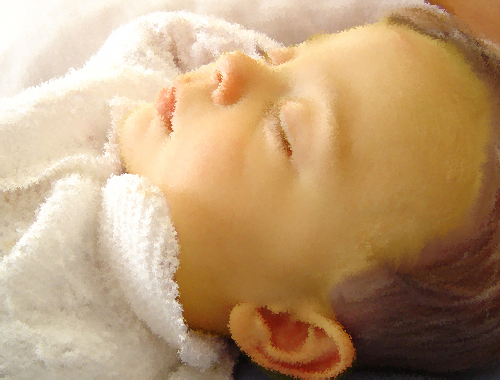Jaundice

Published: 18 Jun 2025
ICD9: 782.4 ICD10: R17 ICD11: SA01
Jaundice is a condition characterized by yellowing of the skin, whites of the eyes (sclera), and mucous membranes due to a buildup of bilirubin in the blood.
Bilirubin is a yellow pigment produced when red blood cells break down.
Here's a more detailed breakdown:
![]() Bilirubin: This is a waste product formed during the normal breakdown of red blood cells. The liver processes bilirubin, and then it's excreted from the body primarily through bile.
Bilirubin: This is a waste product formed during the normal breakdown of red blood cells. The liver processes bilirubin, and then it's excreted from the body primarily through bile.
![]() Causes of Jaundice: Jaundice occurs when there's a problem with bilirubin production, processing, or removal. Possible causes include:
Causes of Jaundice: Jaundice occurs when there's a problem with bilirubin production, processing, or removal. Possible causes include:![]()

![]() Pre-hepatic (before the liver):
Pre-hepatic (before the liver):![]()

![]() Hemolytic anemia: Excessive breakdown of red blood cells leads to increased bilirubin production.
Hemolytic anemia: Excessive breakdown of red blood cells leads to increased bilirubin production.![]()

![]() Genetic disorders: Such as Gilbert's syndrome, which reduces the liver's ability to process bilirubin.
Genetic disorders: Such as Gilbert's syndrome, which reduces the liver's ability to process bilirubin.![]()

![]() Hepatic (in the liver):
Hepatic (in the liver):![]()

![]() Hepatitis: Inflammation of the liver (often caused by viral infections, alcohol abuse, or autoimmune disorders) impairs its function.
Hepatitis: Inflammation of the liver (often caused by viral infections, alcohol abuse, or autoimmune disorders) impairs its function.![]()

![]() Cirrhosis: Scarring of the liver, often from chronic liver disease, interferes with its ability to process bilirubin.
Cirrhosis: Scarring of the liver, often from chronic liver disease, interferes with its ability to process bilirubin.![]()

![]() Liver cancer: Can disrupt liver function.
Liver cancer: Can disrupt liver function.![]()

![]() Certain medications or toxins: Can damage the liver.
Certain medications or toxins: Can damage the liver.![]()

![]() Post-hepatic (after the liver):
Post-hepatic (after the liver):![]()

![]() Gallstones: Blockage of the bile ducts prevents bilirubin from being excreted into the intestines.
Gallstones: Blockage of the bile ducts prevents bilirubin from being excreted into the intestines.![]()

![]() Tumors in the bile ducts or pancreas: Can obstruct bile flow.
Tumors in the bile ducts or pancreas: Can obstruct bile flow.![]()

![]() Scarring or strictures of the bile ducts: Also obstructs bile flow.
Scarring or strictures of the bile ducts: Also obstructs bile flow.
![]() Symptoms: Besides the yellow discoloration, other symptoms may include:
Symptoms: Besides the yellow discoloration, other symptoms may include:![]()

![]() Pale stools (due to lack of bilirubin in the stool)
Pale stools (due to lack of bilirubin in the stool)![]()

![]() Dark urine (due to excess bilirubin being excreted in the urine)
Dark urine (due to excess bilirubin being excreted in the urine)![]()

![]() Itching (pruritus)
Itching (pruritus)![]()

![]() Abdominal pain
Abdominal pain![]()

![]() Fatigue
Fatigue![]()

![]() Nausea
Nausea![]()

![]() Weight loss
Weight loss
![]() Diagnosis: A doctor will typically perform a physical exam and order blood tests to measure bilirubin levels and assess liver function. Imaging tests (like ultrasound, CT scan, or MRI) may be used to identify problems with the liver, gallbladder, or bile ducts.
Diagnosis: A doctor will typically perform a physical exam and order blood tests to measure bilirubin levels and assess liver function. Imaging tests (like ultrasound, CT scan, or MRI) may be used to identify problems with the liver, gallbladder, or bile ducts.
![]() Treatment: Treatment depends on the underlying cause of the jaundice. For example:
Treatment: Treatment depends on the underlying cause of the jaundice. For example:![]()

![]() Jaundice due to infection (e.g., hepatitis): Treatment focuses on addressing the infection.
Jaundice due to infection (e.g., hepatitis): Treatment focuses on addressing the infection.![]()

![]() Jaundice due to gallstones: Surgery or other procedures may be needed to remove the gallstones.
Jaundice due to gallstones: Surgery or other procedures may be needed to remove the gallstones.![]()

![]() Jaundice due to liver disease: Treatment involves managing the underlying liver condition.
Jaundice due to liver disease: Treatment involves managing the underlying liver condition.![]()

![]() Neonatal jaundice: Often resolves on its own or with phototherapy (light therapy) to help break down bilirubin.
Neonatal jaundice: Often resolves on its own or with phototherapy (light therapy) to help break down bilirubin.
![]() Neonatal Jaundice: Jaundice is very common in newborns because their livers are not yet fully developed and are less efficient at processing bilirubin. It's usually temporary and resolves within a week or two with monitoring and sometimes phototherapy.
Neonatal Jaundice: Jaundice is very common in newborns because their livers are not yet fully developed and are less efficient at processing bilirubin. It's usually temporary and resolves within a week or two with monitoring and sometimes phototherapy.
Important Note: Jaundice is a symptom of an underlying medical condition. It's crucial to see a doctor for diagnosis and treatment if you or someone you know develops jaundice. Self-treating can be dangerous.